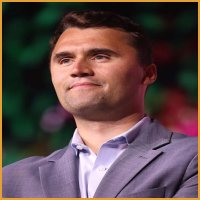Robert Redford's 'Barefoot' Debut: How Old Was He? A Look Back
This article explores Robert Redford's age when he starred in the classic 1967 film Barefoot in the Park. At the time, robert redford age in barefoot in the park was 30 years old. The piece delves into the film's impact, Redford's career trajectory post-release, and the cultural context of the 1960s. It highlights the magic of the film and its role in launching Redford's leading-man status. The focus is on key details surrounding the film's production and its lasting legacy.
Let's rewind to the swinging sixties, a time of bell bottoms, Beatlemania, and a charming romantic comedy that captured hearts worldwide. Today, we're stepping back in time to explore a specific detail of that era: the age of a Hollywood icon during a pivotal moment in his career. Specifically, we're going to look at robert redford age in barefoot in the park.
This article will delve into the specific age of Robert Redford when he took on the role of Paul Bratter in the 1967 film adaptation of Neil Simon's play, Barefoot in the Park. We'll also unpack the film's significance, its impact on Redford's career trajectory, and the cultural landscape that embraced this lighthearted tale of young love and adjusting to married life in a tiny New York City apartment. Prepare for a nostalgic journey through the silver screen and some interesting facts about Redford's early acting days.
The Year of 'Barefoot': Redford's Age Revealed
The year was 1967. The world was changing, and so was Robert Redford's career. At the time of Barefoot in the Park's release, robert redford age in barefoot in the park was 30 years old. It was a pivotal moment, marking his transition from television and theater to the big screen in a leading role that would catapult him to international fame. This wasn't just any role; it was a role that perfectly captured his boyish charm and the subtle strength that would become hallmarks of his acting. It's fascinating to think about how a 30-year-old actor could embody both the youthful exuberance and the underlying maturity that the character of Paul Bratter required.
From Stage to Screen: The Film's Genesis
Before gracing the silver screen, Barefoot in the Park was a smash hit on Broadway. Redford himself had been a part of the play's stage run, albeit with different leading ladies. This experience provided him with a deep understanding of the character and the story's nuances. When the film adaptation came calling, his familiarity with the material undoubtedly gave him an edge. It’s worth noting that Neil Simon's witty dialogue and relatable scenarios resonated deeply with audiences, contributing significantly to the play and the film's enduring popularity. The film’s success also speaks to the power of a well-written story and the right casting choices.
The Chemistry with Jane Fonda and the Making of an Icon
One of the most memorable aspects of Barefoot in the Park is the undeniable chemistry between Redford and Jane Fonda. Their on-screen dynamic was electric, perfectly capturing the ups and downs of a newly married couple. The film’s success was very much a result of their collaborative work. Their compatibility wasn't just a matter of chance; it was a result of their shared dedication to their craft and their ability to bring authenticity to their roles. Many critics at the time noted how their natural performances breathed life into the characters, making them feel accessible and real.
Beyond the Romance: A Cultural Snapshot
Barefoot in the Park wasn't just a romantic comedy; it was a cultural touchstone. The film captured the spirit of the 1960s – a time of social change, shifting values, and a growing emphasis on personal freedom. The film's setting, a cramped New York apartment, mirrored the realities of many young couples starting out. The film's success, therefore, lay partly in its ability to reflect the aspirations and anxieties of a generation. It was a time of optimism, and Barefoot in the Park offered a lighthearted escape that resonated with audiences. It offered a glimpse into the lives of young people navigating marriage and the complexities of relationships.
Redford's Career Trajectory After Barefoot
The success of Barefoot in the Park proved to be a springboard for Robert Redford’s career. The film opened doors to more prominent roles and solidified his status as a leading man. Following Barefoot, Redford went on to star in a string of critically acclaimed and commercially successful films, including Butch Cassidy and the Sundance Kid (1969), The Sting (1973), and All the President's Men (1976). These films not only showcased his acting talent but also his ability to choose projects that resonated with audiences and reflected the changing times. His career is a testament to his versatility, his commitment to his craft, and his ability to evolve with the industry.
The Enduring Legacy of a Classic
Barefoot in the Park continues to be celebrated for its timeless charm, witty dialogue, and the performances of its leads. The film remains a popular choice for movie nights and serves as a reminder of a simpler time. It introduced Robert Redford to a wider audience, solidifying his position in Hollywood history. The film's legacy extends beyond mere entertainment; it offers a window into a specific cultural moment and the enduring power of love and laughter. It’s a film that continues to resonate with viewers of all ages, reminding us of the joys and challenges of starting a life together.
In conclusion, when we look back at robert redford age in barefoot in the park, we see a 30-year-old actor at the cusp of superstardom. The film’s success was the perfect blend of a great story, talented actors, and a cultural moment. It was a pivotal role that catapulted Redford into the Hollywood elite, setting the stage for a remarkable career filled with iconic performances and lasting impact.
Related Posts

Mia Smith
Columnist
Mia Smith is a perceptive Columnist, known for her ability to provide incisive and original perspectives on contemporary society and culture. With years of experience, she crafts engaging content that challenges conventional thinking and sparks vibrant debate among a diverse readership, simplifying complex issues into easily digestible commentary.







